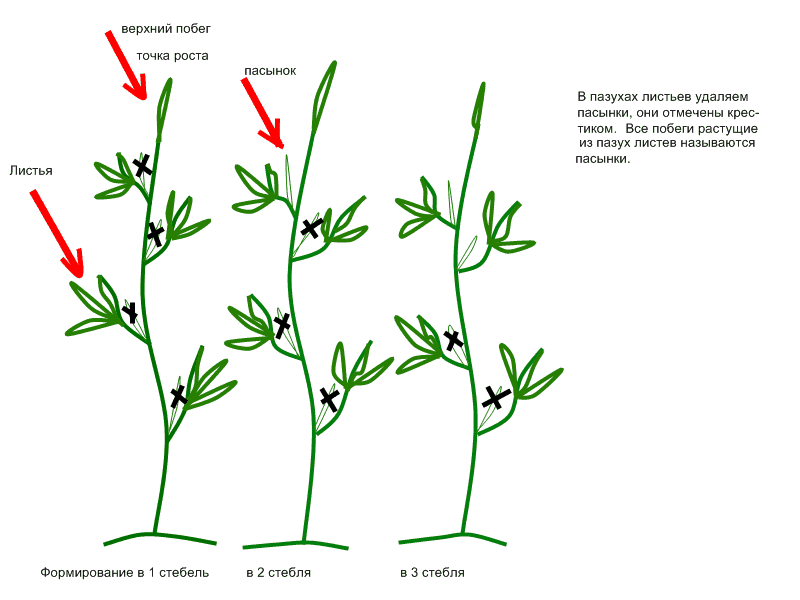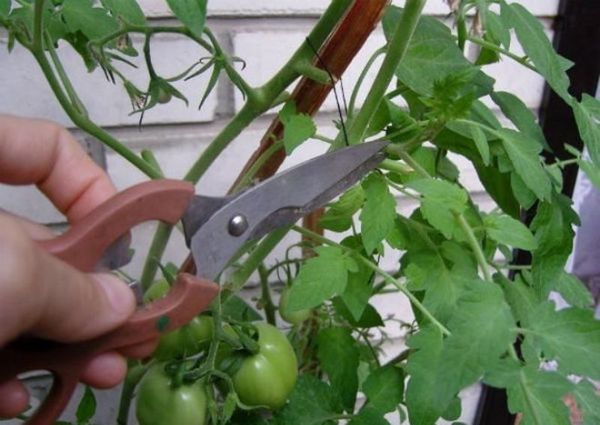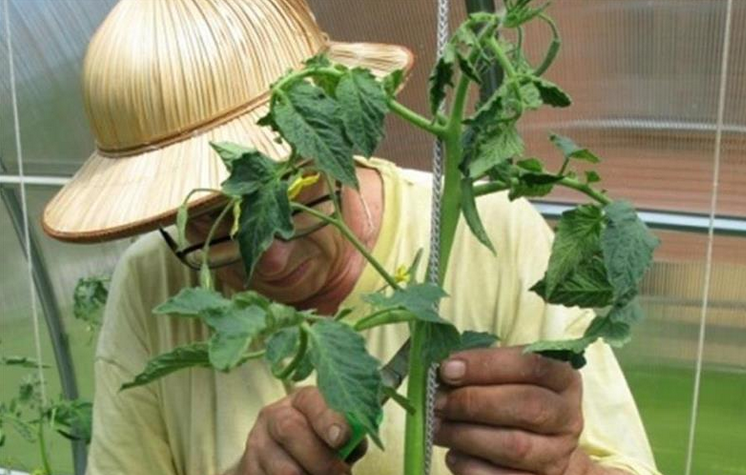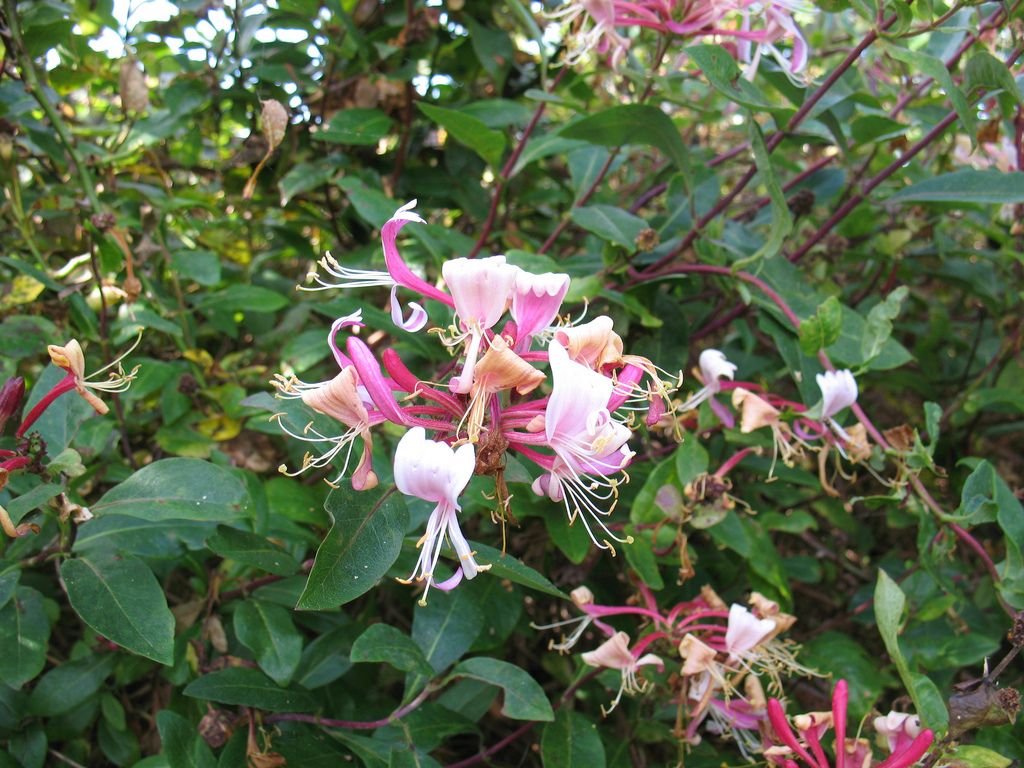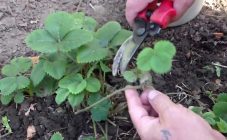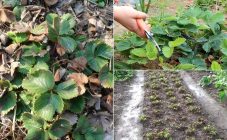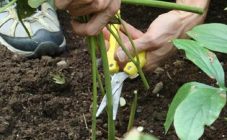Content:
Gardeners who have at least once grown indeterminate tomatoes know how important it is not only to properly water and feed the bushes, but also to cut them. Thanks to this manipulation, the yield of the plant increases, and the risk of developing fungal diseases is reduced significantly. In addition, formed tomatoes take up less space in the garden, which is very important when cultivating the Solanum crop in a shelter. How to prune tomatoes in the garden and in the greenhouse without harming your favorite plants?
Basic information
Due to its sweet and sour taste and rich smell, tomatoes have gained popularity among almost all peoples of the world. This vegetable is consumed fresh, salads and tomato pastes are made from it, and whole in jars. As for the cultivation, it is extremely simple to care for the crop: you only need to water it occasionally, systematically feed it and form it on time.
Pruning is necessary for the crop due to the fact that many varieties throw away too many stepsons. Scientists have proven that about 150 lateral shoots can form on one tomato. Because of such a large amount of greenery, the fruits are knitted small and ripen for a long time, which is extremely undesirable for a gardener who has put his whole soul into the plant. Moreover, even those that have tied up can quickly rot in impassable thickets due to infection with a fungus.
To find out how much molding is necessary for the cultivated variety, you need to determine its belonging to one or another group. According to the structure of the bush, tomatoes are divided into two types: determinant and indeterminate. If the undersized plants are quite compact, then the tall ones impress not only with the length of the stems, reaching about 2 m, but also with strong branching.
Building such a structure, the plant, as a rule, forms smaller fruits, since most of the macro- and microelements obtained from the soil are directed to the formation of green mass, and not fruits.
Moreover, the culture is very susceptible to diseases of fungal origin, the development of which is stimulated by moist soil, from which microorganisms enter the stems and leaves of the plant. To redirect nutrients, as well as reduce the area of contact of the stems with the soil, the lower leaves and part of the stems are cut off.
How to prune tomatoes correctly
Before you get puzzled about how to prune tomatoes, you need to prepare your tools. It is best to manipulate with scissors or pruners. To reduce the risk of infection of young tomatoes with all kinds of diseases, the instruments are disinfected.
You can pick off the petioles and young leaves by hand, but you need to do this by directing the force vertically, since if you pull the processes down, you can peel the skin off the stem. Because of such injuries, the bush will spend a lot of energy on tightening wounds and postponing fruiting.
Regardless of the variety, first of all, pinch off all the lower leaves that lie on the ground or shade the stem. To improve lighting and air permeability of thickened plantings, the leaves are removed at the first brush. The lateral processes are also subject to pruning.
The feasibility of pruning different varieties
Doing or not docking tomatoes, each summer resident decides independently, based on the location of the growing region and the characteristics of the selected variety.So in the southern regions, where the weather is most consistent with the requirements of a heat-loving culture, and low and high bushes develop well and bear fruit without pruning.
To get a generous crop of vegetables in the central and northern parts of the country, regardless of the variety, tomatoes must be cut. Plants with a minimal number of leaves and stepchildren receive plenty of light and air, which is beneficial for disease resistance and yield. It is especially important to prune late-ripening indeterminate varieties, which, due to constant growth in autumn, often suffer from fungi and lose most of the fruit.
How to stop tomato seedlings correctly so that the manipulation does not harm, but only benefits? First of all, you need to decide on the timing of the pruning.
Pruning rules
Pruning begins a week after planting the plant in open or closed ground. The manipulation is carried out gradually, alternately removing 2 leaves. Contrary to the opinion of many gardeners, you cannot pick off all the leaves at one time. As a result of such a large-scale intervention, the plant will begin to actively grow green mass, instead of setting fruit.
The best time to prune tomatoes is in the morning on a sunny day. By the evening, a thin crust will appear at the cut site, which blocks the path of pathogenic bacteria into the plant. Stepsons pluck 1 time a week, yellow leaves - in 2-3 weeks. A leaf on which there is at least one sign of a fungal or viral disease is pinched off immediately after appearance.
The central conductor of tall tomatoes is pruned when 6-8 fruit clusters are formed on the plant. This part of tomato pruning falls at the end of July-August.
Pruning tomatoes in the greenhouse and open field
It is simply necessary to prune tomatoes growing indoors, as in such conditions they suffer greatly from a lack of light and free space. Pruning tomatoes in a greenhouse scheme:
- Remove old yellow leaves that no longer perform any functions and, under favorable conditions, can become a breeding ground for fungi;
- In several approaches, the bottom layer of the leaves is cut off. Since the tomatoes in the greenhouse are tied to stakes, there is no need for natural support. In addition, after the procedure, the plant is less likely to suffer from fungal diseases, since the stem is better illuminated and becomes stronger;
- In order for each tomato growing in greenhouses to receive the required amount of light, remove leaves that cast shadows on neighboring plants;
- After all the fruits are tied, young leaves are cut off, leaving only a few pieces. According to some gardeners, this is how the fruits are formed large and are poured faster. The second half of the gardening community believes that as a result of this technique, photosynthesis and the supply of nutrients to the plant are impaired. To permanently determine its necessity or uselessness, it is better to cut off some tomatoes, and leave others with leaves, and after the end of fruiting, compare their yield. This is the only way to know the correct method.
Depending on the place of cultivation and the variety, the bushes form from one to three stems. Pruning tall tomato seedlings, which involves molding into one stem, is done as follows:
- As they appear, all the side stepsons break off. New formations appear in 5-7 days;
- In places where 2 brushes have formed, the one that is weaker is pinched off.
Thanks to this pruning, the plant is illuminated and ventilated as well as possible.
How to stop tomatoes of determinate varieties? The essence of the method of molding into 2 and 3 stems is that among all the stepchildren, only 1 or, respectively, 2 processes are not pinched off, located below the fruiting brush with which the top is decorated. The procedure is carried out once a week.
In order not to confuse an ordinary shoot with a fertile brush, docking is carried out after 9-11 days. In order to avoid infection of healthy plants, pruning must be done in a certain order: first of all, stepchildren break off exactly on the strongest specimens and only after that stepchildren "suspicious" bushes. When picking up tomatoes, you need to leave a small scion. Thanks to this trick, the plant will recover faster and start pouring the fruit.
It is best to cut off the stepsons when their length reaches 5-6 cm. The stepson, who has greatly outgrown, should not be cut off - by this time he had already taken a lot of strength from the plant, as a result of which pinching off the appendix will not bring the desired effect.
Healthy leaves left over after cutting a tomato are piled up and placed in a compost pit, and spotted and dried leaves are taken out of the area and burned.
Pruning tomatoes in the greenhouse and in the garden has a general step-by-step plan:
- Tear off the leaves located at the bottom of the plant;
- Pinch off the lateral processes and leaves between the brushes;
- They stop growing by pinching the central conductor.
The only difference between carrying out manipulations in an open and in a closed space is the order in which the supports are installed. If in film shelters the tomato initially grows near the support, then it is installed on the garden bed only after pruning.
You can give the bushes a vertical position with the help of pegs or trellises arranged along the tomato garden. The stems are not fixed with rigid wire, as many do, but with elastic twine or a piece of nylon fabric.
Pruning is one of those manipulations that must be performed when growing tomatoes. Due to the timely pinching of leaves and pinching, the bushes take up less space, are better warmed up by the sun and blown by the wind. It is proved that formed tomatoes are practically not susceptible to fungal diseases and get enough sun and vitamins. The combination of the above factors allows you to get a really good harvest.

